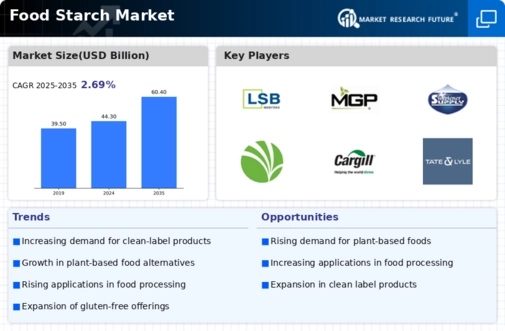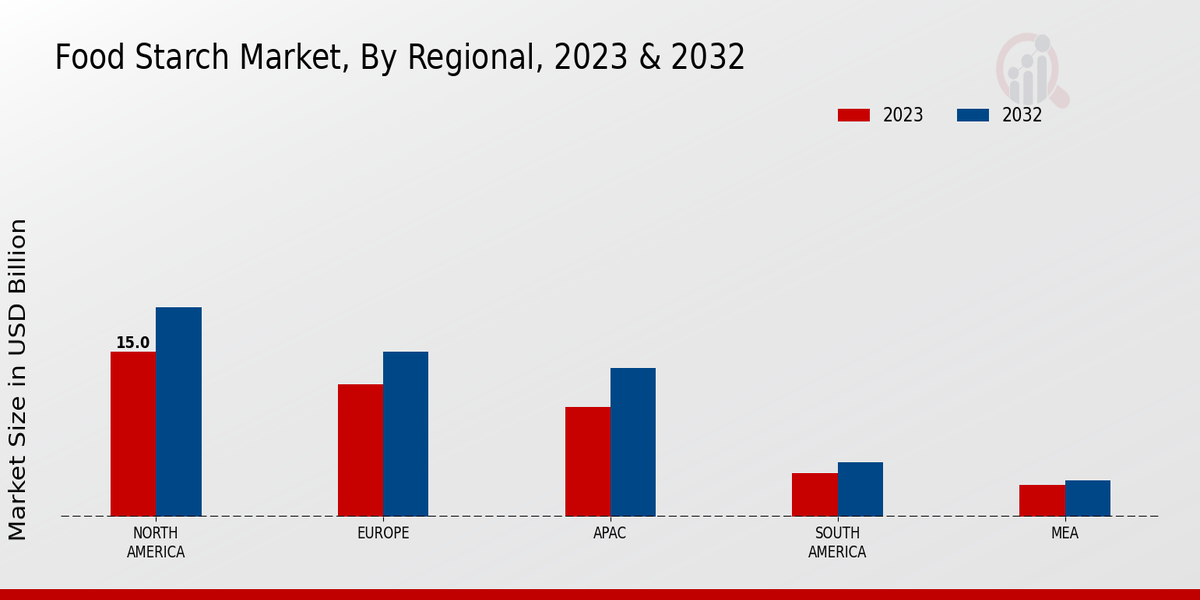Market Growth Projections
The Global Food Starch Market Industry is projected to experience steady growth over the coming years. With an estimated market value of 44.3 USD Billion in 2024, the industry is expected to reach 60.4 USD Billion by 2035. This growth trajectory indicates a compound annual growth rate of 2.85% from 2025 to 2035. Such projections reflect the increasing demand for food starches across various applications, driven by consumer preferences for convenience and health-oriented products. The market's expansion is likely to be supported by ongoing innovations and the continuous evolution of the food and beverage landscape.
Health and Nutrition Trends
The Global Food Starch Market Industry is witnessing a shift towards health-conscious consumption patterns. Consumers are increasingly seeking products that align with their health and wellness goals, prompting manufacturers to innovate with food starches that offer functional benefits. For instance, resistant starches are gaining popularity due to their potential health benefits, such as improved gut health and blood sugar management. This trend not only enhances the appeal of food products but also drives the demand for specialized starches, thereby contributing to the overall growth of the market. The industry's adaptation to these health trends is crucial for maintaining competitiveness.
Rising Demand for Processed Foods
The Global Food Starch Market Industry experiences a notable increase in demand for processed foods, driven by changing consumer lifestyles and preferences. As more individuals seek convenience in their meals, the incorporation of food starches in various products, such as sauces, snacks, and ready-to-eat meals, becomes essential. This trend is projected to contribute to the market's growth, with the industry expected to reach 44.3 USD Billion in 2024. The versatility of food starches in enhancing texture and stability in processed foods positions them as a vital ingredient, thereby fostering a robust market environment.
Expansion of the Food and Beverage Sector
The Global Food Starch Market Industry is significantly influenced by the expansion of the food and beverage sector. As the global population continues to grow, the demand for diverse food products increases, leading to a higher utilization of food starches. These starches serve as thickeners, stabilizers, and gelling agents, which are crucial in various applications. The industry is anticipated to grow to 60.4 USD Billion by 2035, reflecting a compound annual growth rate of 2.85% from 2025 to 2035. This growth is indicative of the essential role food starches play in meeting the evolving needs of consumers and manufacturers alike.
Sustainability and Environmental Concerns
Sustainability and environmental concerns are becoming increasingly relevant in the Global Food Starch Market Industry. As consumers and businesses alike prioritize eco-friendly practices, the demand for sustainably sourced and produced food starches is on the rise. This shift encourages manufacturers to adopt sustainable agricultural practices and invest in eco-friendly production methods. By aligning with these values, companies can enhance their brand image and appeal to a broader consumer base. The emphasis on sustainability not only addresses environmental issues but also positions the industry for long-term growth in a market that is evolving towards greener alternatives.
Technological Advancements in Starch Production
Technological advancements in starch production processes are significantly impacting the Global Food Starch Market Industry. Innovations such as enzymatic modification and advanced extraction techniques enhance the quality and functionality of food starches. These improvements allow for the development of starches with tailored properties, catering to specific applications in the food sector. As a result, manufacturers can produce high-quality starches that meet the diverse needs of consumers and food producers. This focus on innovation is likely to drive market growth, as companies strive to differentiate their products in an increasingly competitive landscape.








